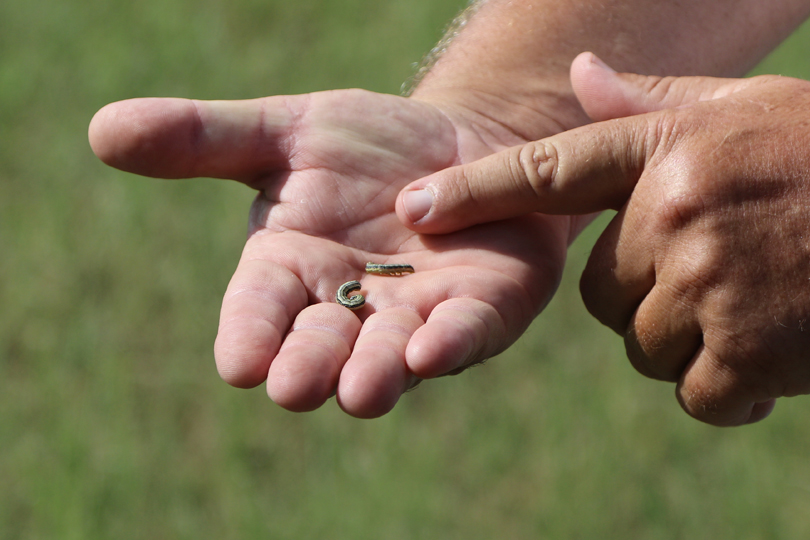By Jennifer Whitlock
Field Editor
Armyworms routinely make the march across Texas hayfields every fall, but this summer’s increased rainfall and milder temperatures have armyworm battalions primed for maximum destruction.
With 95% of Texas currently out of drought, Texas A&M AgriLife Extension Forage Specialist Dr. Vanessa Corriher-Olson said armyworm pressure increased over the past few weeks.
She recently spent an entire day answering calls from farmers and ranchers across North and Central Texas asking for advice on managing the pests.
“The big question is, ‘How long will they be a problem?’ and the answer is until the first killing frost,” she said. “Armyworms are not a ‘spray once and they won’t be a problem’ kind of thing. This could be a two-, three- or four-spray situation if forage for hay or grazing is valuable to them.”
There are four common armyworm species found in Texas, with the grass strain of the fall armyworm being the most active at this time of year, according to AgriLife. These caterpillars infest hay fields and pastures, where they feed on the leaves.
Armyworms prefer high-quality, fertilized forage like that grown for hay production and can destroy entire fields in a matter of days. Using data from the U.S. Department of Agriculture, AgriLife Extension entomologist Dalton Ludwick estimated two armyworms per square foot can consume 84 pounds of forage per acre.
Treatment should be applied immediately when armyworms reach a threshold of three or more caterpillars per square foot, Corriher-Olson noted.
“It’s important to act immediately because if armyworms are left unchecked, they can devastate a forage crop in a matter of hours,” she said. “I’ve seen entire hay meadows that were consumed overnight.”
Fall armyworms are green with brown or black bumps on the last two segments and have apparent white markings that form an upside-down Y on the head. She recommended farmers and ranchers scout their fields every morning.
Armyworms are primarily night feeders but are still active in the morning and will remain active longer on days with cooler temperatures and cloudy skies. The most common method of scouting is to simply observe the field. Remember to check the lower parts of the plant or soil surface, where armyworms may be trying to avoid sun and warm temperatures.
“They are there the whole time, we just may not see them due to their size, numbers or both,” Corriher-Olson said. “It just takes the right weather conditions, and you can see an explosion in a matter of days.”
Insecticides labeled for armyworms in pastures and hayfields paired with a growth inhibitor is Corriher-Olson’s recommended control method. She said the pyrethroid will manage existing caterpillars while the growth regulator will kill hew hatches and any migrating caterpillars from neighboring fields.
For more information on armyworm management, view AgriLife’s Fall Armyworm Control in Pastures booklet.

